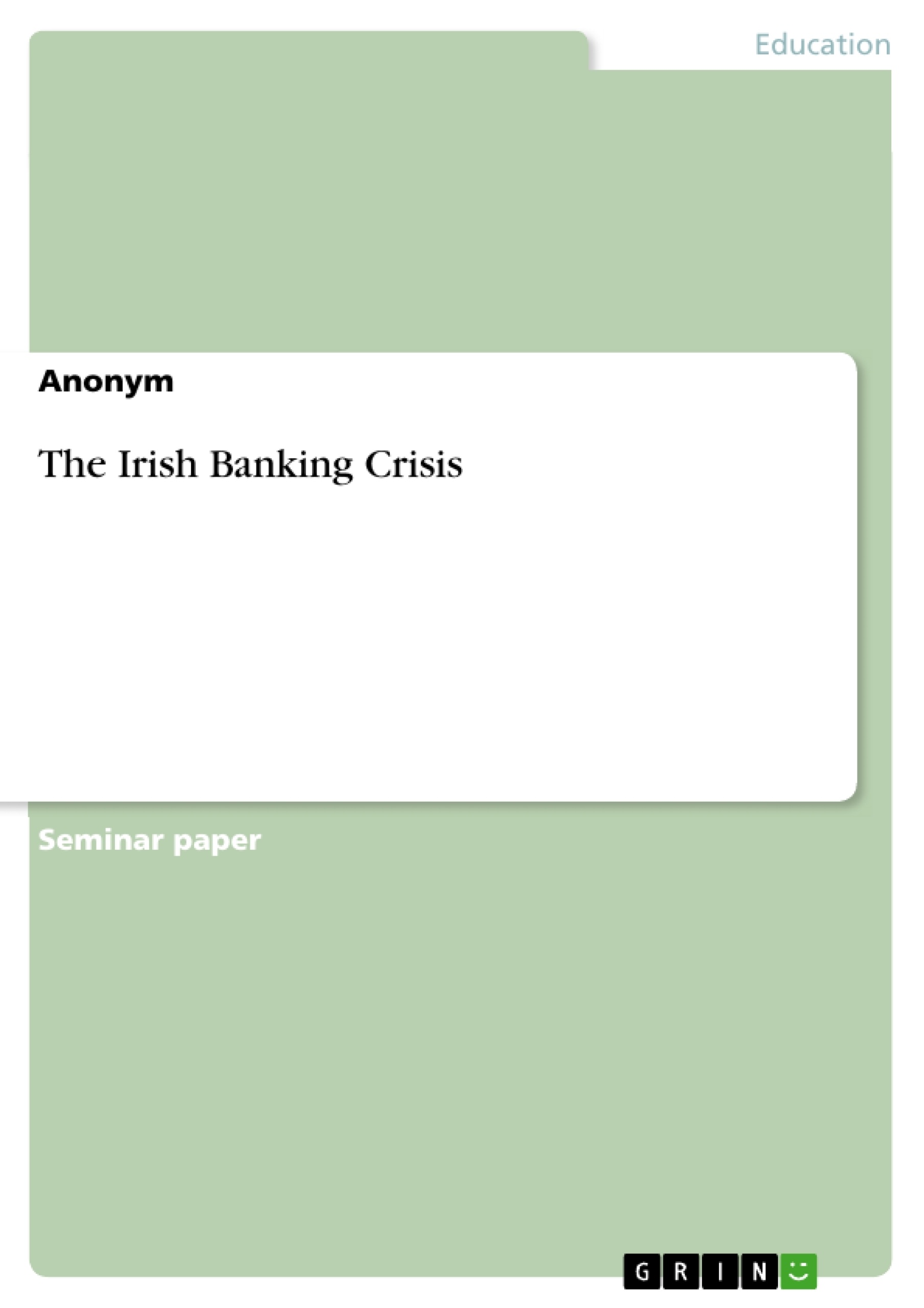The economy of Ireland was driven to misery by its major banks. In 2008, enormous losses unfolded from the institute's property-related speculations. In order to prevent multiple bank insolvencies, the Irish government decided to guarantee towards their depositors extensively and taxpayers shouldered the burden of debt. At first this paper links Ireland's economic reorientation to its history. Besides recounting crucial events, the main focus of this work is on explaining the conditions that gave rise to the Irish banking crisis.
Inhaltsverzeichnis (Table of Contents)
- RISE OF THE CELTIC TIGER
- IRELAND'S ECONOMIC REORIENTATION
- COLLAPSE OF THE IRISH BANKING INDUSTRY
- CRISIS MANAGEMENT
- A Governmental Blanket Guarantee and Capital Injections
- The European Union and International Monetary Fund-Programme
- Rearrangement of the Irish Banking System
- Restructuring of Credit
- CONDITIONS THAT FACILITATED THE CRISIS
- Liberalization of the Banking System
- The Availability of Cheap Money
- Relying on Market Powers and Good Corporate Governance
- Financial Regulation and its Weaknesses
- Moral Hazard
Zielsetzung und Themenschwerpunkte (Objectives and Key Themes)
This paper explores the Irish banking crisis of 2008, examining its causes and the economic consequences. It aims to shed light on the conditions that contributed to the crisis, including the liberalization of the banking system, the availability of cheap money, and the reliance on market forces.
- The economic history of Ireland, focusing on the rise of the Celtic Tiger and its economic reorientation
- The impact of globalization and neoliberalism on the Irish economy
- The role of foreign direct investment and tax incentives in Ireland's economic growth
- The consequences of the US subprime mortgage crisis and the global liquidity crisis on Irish banks
- The conditions that facilitated the Irish banking crisis, including financial deregulation and the availability of cheap money
Zusammenfassung der Kapitel (Chapter Summaries)
- RISE OF THE CELTIC TIGER: This chapter details Ireland's economic transformation from a relatively poor country to a thriving economy, known as the Celtic Tiger, driven by foreign direct investment and tax incentives. It highlights the role of the Catholic Church in shaping Irish society and the shift towards neoliberalism in the 1990s.
- IRELAND'S ECONOMIC REORIENTATION: This chapter explores the factors that contributed to Ireland's economic reorientation, including the establishment of the Dublin International Financial Services Centre (IFSC) and the attraction of multinational firms by tax incentives and modern infrastructure.
- COLLAPSE OF THE IRISH BANKING INDUSTRY: This chapter examines the events leading to the collapse of the Irish banking industry, including the US subprime mortgage crisis, the global liquidity crisis, and the vulnerability of Irish banks to short-term borrowing and exposure to the domestic property market.
- CRISIS MANAGEMENT: This section focuses on the government's response to the banking crisis, including the provision of a blanket guarantee to depositors, capital injections into banks, and the subsequent involvement of the European Union and International Monetary Fund.
- CONDITIONS THAT FACILITATED THE CRISIS: This chapter delves into the underlying factors that facilitated the Irish banking crisis, including the liberalization of the banking system, the availability of cheap money, the reliance on market powers and good corporate governance, the weaknesses of financial regulation, and the presence of moral hazard.
Schlüsselwörter (Keywords)
This paper explores the Irish banking crisis, drawing on key concepts such as economic reorientation, neoliberalism, foreign direct investment, financial deregulation, cheap money, moral hazard, global liquidity crisis, and the role of government intervention in the banking sector.
- Citar trabajo
- Anonym (Autor), 2015, The Irish Banking Crisis, Múnich, GRIN Verlag, https://www.grin.com/document/295479



